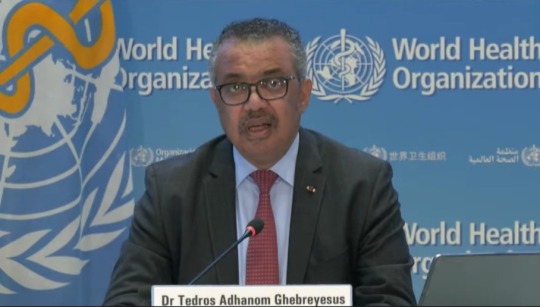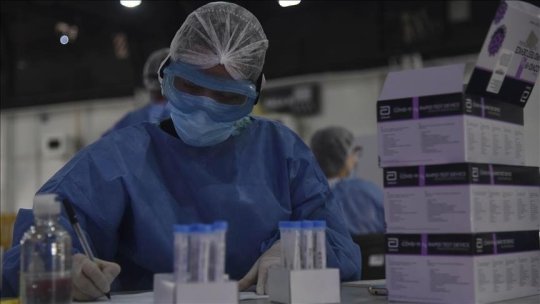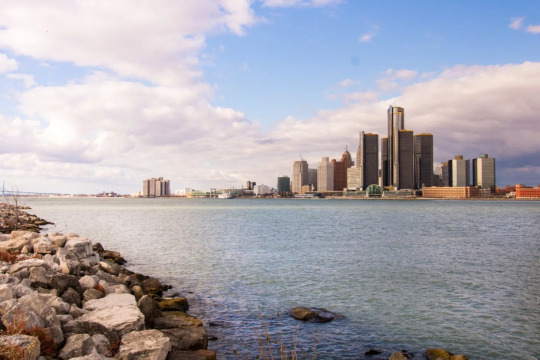#General Tedros Adhanom Ghebreyesus
Text
For five days, the Israeli military had been drawing closer to the hospital, where hundreds of patients, including newborn babies, have gone without electricity and with little food as fighting raged around them.
Witnesses told Reuters that tanks entered the complex at 3am and that one parked in front of the emergency department. Mohammed Zaqout, the director of hospitals in the territory, said Israeli soldiers entered the emergency department and the surgery building, which also contains intensive care units. An official at the Hamas-run health ministry told AFP he could see “dozens of soldiers and commandos inside the emergency and reception buildings”.
Witnesses who spoke to the BBC and AFP said Israeli soldiers used loudspeakers to demand that all males aged between 16 and 40 leave every part of the hospital complex other than the surgical and emergency wings and enter the hospital courtyard.
“All men 16 years and above, raise your hands,” a soldier shouted in accented Arabic, according to a journalist speaking to AFP. “Exit the building towards the courtyard and surrender,” the soldier ordered.
About 1,000 Palestinian males, their hands above their heads, were soon led into the vast hospital courtyard, some of them stripped naked by Israeli soldiers checking them for weapons or explosives, the journalist said.[...]
The Israeli army released video showing soldiers carrying boxes labelled “baby food” and “medical supplies”.
A spokesperson for the Palestinian ministry of health in Gaza, Ashraf al-Qudra, told Al Jazeera Arabic that “only doctors, patients and displaced people” were present when Israeli forces entered the hospital’s emergency department. “We have nothing to be afraid of or hide,” he said.
Omar Zaqout, who works in the emergency room at al-Shifa, told Al Jazeera that Israeli soldiers had detained and assaulted some men who had taken refuge there. “[They] did not bring any aid or supplies, they only brought terror and death,” he said.[...]
The Israeli authorities have long maintained that Hamas uses the area below the hospital as a command centre. Hamas and hospital staff deny this.
The IDF said in a briefing that soldiers found “weapons and other terror infrastructure,” at al-Shifa, and that they had seen “concrete evidence that Hamas terrorists used the Shifa hospital as a terror headquarters,” which they intended to publish later.
Hamas said the IDF’s claims were “nothing but a continuation of the lies and cheap propaganda, through which [Israel] is trying to give justification for its crime aimed at destroying the health sector in Gaza”.
The raid continued well into the afternoon, though details were scant due to a widespread telecommunications blackout[...]
The head of the World Health Organization, Tedros Adhanom Ghebreyesus, said his organisation had lost contact with medics inside al-Shifa.
In the late afternoon, Boursh told Al Jazeera that Israeli troops were still present in the hospital. “They are still here … patients, women and children are terrified,” he said. He said the medical staff had vowed to stay with their patients “till the end.”[...]
Boursh told the Guardian that some who attempted to flee al-Shifa earlier this week were surrounded by gunfire as they left the hospital grounds, and turned back.
The Palestinian health ministry said 40 patients died on Tuesday, after five days without the fuel needed to power generators that fed dialysis machines and other vital medical equipment. The hospital had also run out of clean water, and doctors said they were subsisting on dates to survive as food supplies dwindled to nothing.
Corpses were piled in front of the hospital, with staff too terrified to move between buildings. The UN’s office for humanitarian affairs said staff at al-Shifa, for decades the linchpin of Gaza’s medical system, had begun preparations for a mass grave to entomb 180 bodies in front of the facility, as there was no way for them to leave in order to bury the dead.
15 Nov 23
2K notes
·
View notes
Text

Israel “targeting a building knowing it is full of humanitarian workers and their families is unconscionable”, MSF’s general director Meinie Nicolai said in a statement.
“The amount of force being used in densely populated urban environments is staggering,” Nicolai said.
Five MSF staff members have been killed since the beginning of Israel’s war on Gaza, in addition to many family members of the organisation’s staff
Gaza has become a death zone”: World Health Organization Chief Tedros Adhanom Ghebreyesus says “inhumane” health and humanitarian situation worsens.
Palestine Red Crescent Society warns of dire situation at al-Amal Hospital in Khan Younis as Israeli siege continues for 30th day.
Doctors Without Borders (Medecins Sans Frontieres, or MSF) “outraged” by Israeli attack on MSF shelter in al-Mawasi that killed two family members of staff and injured six.
Residents of northern Gaza Strip have only animal feed to eat for past three weeks, says Ismail al-Thawabteh, head of Gaza’s government media office.
At least 29,313 Palestinians have been killed and 69,333 injured in Israeli attacks on Gaza since October 7, the Health Ministry says. The death toll in Israel from the October 7 Hamas-led attacks stands at 1,139.
#Palestine#Gaza#Free Palestine#Free Gaza#from the river to the sea palestine will be free#current events#news#Aljazeera
863 notes
·
View notes
Text
WHO: COVID-19 CASES FALL BUT HIGH DEATHS STILL IS 'UNACCEPTABLE'
WHO: COVID-19 CASES FALL BUT HIGH DEATHS STILL IS ‘UNACCEPTABLE’
New coronavirus cases reported globally dropped nearly a quarter in the last week while deaths surged and is considered ‘completely unacceptable,’ said the World Health Organization (WHO) Director-General Tedros Adhanom Ghebreyesus on Wednesday.At a press briefing, Tedros said reported coronavirus deaths over the past month have surged by 35 percent, and noted there had been 15,000 deaths in the…

View On WordPress
1 note
·
View note
Text
Monkeypox spreading in Latin America
New Post has been published on https://www.timesofocean.com/monkeypox-spreading-in-latin-america/
Monkeypox spreading in Latin America

Bogota (The Times Groupe)- Colombian health officials confirmed three Monkeypox cases in adults traveling from Europe on Friday. Latin America
Two cases were reported in the national capital of Bogota, while a third was reported in Medellin.
More than 3,200 Monkeypox cases have been reported in 48 countries, according to the World Health Organization (WHO).
Chile, Mexico, Brazil, Venezuela, and Argentina were the first Latin American countries to confirm the disease.
After experiencing suspicious symptoms, two people — one from Argentina and one from Spain — tested positive, according to the Argentine Health Ministry.
Mexico reported its first “imported” case the next day, when a 50-year-old man from New York City “was probably infected in the Netherlands.”
A 41-year-old man who traveled to Spain and Portugal and was admitted to a hospital in Sao Paulo confirmed Brazil’s first case on June 9.
A patient from Spain was reported as Venezuela’s first case on June 13.
Monkeypox was confirmed in Chile on June 17. An adult who had traveled to Europe and presented symptoms related to this disease was found to have it, health officials said.
The World Health Organization is considering whether to declare Monkeypox a global emergency, which would give it the same status as the Coronavirus pandemic.
Until now, Monkeypox has mostly affected men who have sex with other men, but experts warn anyone in close contact with an infected person or their clothing could be infected. Before a rash appears on the skin, there can be fever, enlarged lymph nodes, back pain, and muscle aches.
According to WHO Director-General Tedros Adhanom Ghebreyesus, Monkeypox may be more widespread than official numbers indicate.
“It is likely that person-to-person transmission is underestimated,” he said. Latin America
#argentina#bogota#Brazil#chile#coronavirus pandemic#health news#Latin American countries#Mexico#Monkeypox#Sao Paulo#The Times Groupe#Times Of Ocean#Unravel News#venezuela#WHO Director-General Tedros Adhanom Ghebreyesus#World Health Organization (WHO)#Health
0 notes
Text
Best News of Last Week - July 3, 2023
��� - This dog is 'disc'-overing hidden treasures! Get ready for the 'paws'-itively successful fundraiser, Daisy's Discs!
1. Most unionized US rail workers now have new sick leave

More than 60% of U.S. unionized railroad workers at major railroads are now covered by new sick leave agreements, a trade group said Monday.
Last year railroads came under fire for not agreeing to paid sick leave during labor negotiations.
2. Missing teen found after being lost in the wilderness for 50 hours

Esther Wang, 16, had been hiking with three other people through the Maple Ridge park on Tuesday.
The group made it to Steve’s lookout around 2:45 p.m. that day.However, when they headed back down to the campsite, after about 15 minutes of hiking, the group leader realized Wang was missing. They returned to the lookout to look for Wang but couldn’t find her. The leader headed to the trail entrance to notify a park ranger and police.
“Esther Wang has been located. She’s healthy, she is happy and she’s with family.”
3. A dog has retrieved 155 discs from woods. They’ll be on sale soon, with proceeds going to the park in West Virginia where they were found

Meet Daisy, the yellow Labrador retriever with a unique talent for finding lost Frisbee golf discs at Grand Vue Park in West Virginia. Four years ago, while on a walk with her owner Kelly Mason, Daisy discovered a disc in the woods and proudly brought it back. Since then, Daisy's obsession with finding stray discs has grown, and she has collected an impressive cache of 155 discs.
Mason and park officials have now come up with a plan to return the discs to their owners if they are labeled, and any unclaimed discs will be sold as a fundraiser to support the park's disc golf courses. Daisy's Discs is expected to be a success, with many excited about the possibility of recovering their lost discs thanks to Daisy's remarkable skills.
4. Australian earless dragon last seen in 1969 rediscovered in secret location

A tiny earless dragon feared to be extinct in the wild has been sighted for the first time in more than 50 years – at a location that is being kept secret to help preservation efforts.
The Victorian grassland earless dragon, Tympanocryptis pinguicolla, has now been rediscovered in the state, according to a joint statement issued by the Victorian and federal Labor governments on Sunday.
5. Detroit is going to power 100% of its municipal buildings with solar

All of Detroit’s municipal buildings are going to be powered by neighborhood solar as part of the city’s efforts to combat climate change – check out the city’s cool grassroots plan. Meet Detroit Rock Solar City.
The city has determined that it’s going to need around 250 acres of solar panels in order to achieve 100% solar power for its municipal buildings.
6. Canada Officially Bans Cosmetic Testing on Animals

The fight for cruelty-free beauty in Canada has seen a significant breakthrough as the Canadian government legislates a full ban on cosmetic animal testing and trade, marking a victory for Animal rights advocates and eco-conscious consumers.
This landmark decision is part of the Budget Implementation Act (Bill C-47), not only prohibiting cosmetic animal testing but also putting an end to the sale of cosmetics that use new animal testing data for safety substantiation.
7. Belize certified malaria-free by WHO

The World Health Organization (WHO) has certified Belize as malaria-free, following the country’s over 70 years of continued efforts to stamp out the disease.
“WHO congratulates the people and government of Belize and their network of global and local partners for this achievement”, said Dr Tedros Adhanom Ghebreyesus, WHO Director-General. “Belize is another example of how, with the right tools and the right approach, we can dream of a malaria-free future.”
----
That's it for this week :)
This newsletter will always be free. If you liked this post you can support me with a small kofi donation:
Support this newsletter ❤️
Also don’t forget to reblog.
1K notes
·
View notes
Text
Fuck yeah
“As a malaria researcher, I used to dream of the day we would have a safe and effective vaccine against malaria. Now we have two,” said Dr Tedros Adhanom Ghebreyesus, director general of the WHO.
[...]
Each dose costs between $2 and $4; four doses are needed per person.
525 notes
·
View notes
Text
I’m struggling to speak because... Because the situation is beyond words”
The WHO Director-General Tedros Adhanom Ghebreyesus is moved to tears as he talks about the current situation in Gaza Strip.
#Who#palestine#gaza#free palestine#israel#save the children#Save Gaza#save palestine#jerusalem#i stand with palestine#فلسطين#free gaza#israel is a terrorist state
49 notes
·
View notes
Text
"A new World Health Organization (WHO) report highlights that 5.6 billion people – 71% of the world’s population – are now protected with at least one best practice policy to help save lives from deadly tobacco – five times more than in 2007.
[Note: Going by the math, that means just (roughly) 14% of people were covered by tobacco control policies in 2007. Talk about a huge increase!]
In the last 15 years since WHO’s MPOWER tobacco control measures were introduced globally, smoking rates have fallen. Without this decline there would be an estimated 300 million more smokers in the world today.
This WHO Report on the global tobacco epidemic, supported by Bloomberg Philanthropies, is focused on protecting the public from second-hand smoke, highlighting that almost 40% of countries now have completely smoke-free indoor public places.
The report rates country progress in tobacco control and shows that two more countries, Mauritius and the Netherlands, have achieved best-practice level in all MPOWER measures, a feat that only Brazil and Türkiye had accomplished until now.
[Note: In late 2021, the former Turkey changed official its name to Türkiye, shedding the English/Anglicized spelling.]
“These data show that slowly but surely, more and more people are being protected from the harms of tobacco by WHO’s evidence-based best-practice policies,” said Dr Tedros Adhanom Ghebreyesus, WHO Director-General...
Smoke-free public spaces is just one policy in the set of effective tobacco control measures, MPOWER, to help countries implement the WHO Framework Convention on Tobacco Control and curb the tobacco epidemic.
Smoke-free environments help people breathe clean air, shield the public from deadly second-hand smoke, motivate people to quit, denormalize smoking and help prevent young people from ever starting to smoke or use e-cigarettes.
“While smoking rates have been going down, tobacco is still the leading cause of preventable death in the world – largely due to relentless marketing campaigns by the tobacco industry,” said Michael R. Bloomberg, WHO Global Ambassador for Noncommunicable Diseases and Injuries...
Eight countries are just one MPOWER policy away from joining the leaders in tobacco control: Ethiopia, Iran, Ireland, Jordan, Madagascar, Mexico, New Zealand, and Spain...
This report demonstrates that all countries irrespective of income levels can drive down the demand for deadly tobacco, achieve major wins for public health and save economies billions of dollars in health care and productivity costs."
-via World Health Organization, July 31, 2023
#smoking#cigarette#tobacco#cw smoking#nicotine#big tobacco#smokers#world health organization#brazil#turkiye#turkey#netherlands#mauritius#public health#preventable diseases#mortality rate#good news#hope
95 notes
·
View notes
Text

For over 20 days, Israeli snipers and tanks have been besieging the Nasser and Al-Amal Hospitals in Khan Younis, the second-largest city in the Gaza Strip.
Over the past few days, several videos appeared of Palestinians being shot while attempting to enter and exit the medical complex of the Nasser or Al-Amal hospitals.
On Sunday morning, an Israeli sniper shot and killed a Palestinian man just meters away from the main gate of the Nasser. Cautiously and under the fear of being shot, Palestinian medics lifted the body back to the hospital amid the mourning and cries of his relatives.
A tweet with video of the man's body being moved is included in the Mondoweiss article.
The Nasser Hospital is the largest equipped medical facility in southern Gaza, which currently shelters at least 300 medical personnel, 450 patients wounded, and around 10,000 displaced Palestinians.
Over the weekend, a woman who braved Israeli sniper bullets and rushed to rescue a bleeding Palestinian outside the Nasser hospital was identified as Dr. Amira Al-Assouli.
She is a gynecology and obstetrics consultant from Khan Younis, recently retired from the Nasser Hospital but went back to volunteer and help her former colleagues following Israel’s aggression on Gaza in October.
Assouli talked to the Wafa news agency about the moment that went viral on social media when she ran to help an injured man on Friday.
“God removed fear from my heart. I felt that someone needed help. I will not think about myself, I will think about saving people,” she said.
Assouli had seen some of her colleagues get shot and killed near the Nasser Hospital, such as Dr. Muhammad Abu Lihiyah, who was killed by Israeli snipers when he tried to rescue an injured Palestinian.
Tedros Adhanom Ghebreyesus, the chief of World Health Organization (WHO), wrote on the X platform on Sunday that they are deeply “concerned about the safety of patients and health personnel due to the intensifying hostilities in the vicinity of the [Nasser] hospital.”
Ghebreyesus said that Israeli forces denied the WHO mission entry to the Nasser on Sunday, which remains partially operating.
The Al-Amal Hospital has also been under Israeli siege for over 20 days.
In January, Israeli forces raided the Al-Amal and detained dozens of medical staff, and patients and seized medical equipment. Israeli forces also mined roads and destroyed residential buildings around the Al-Amal and Nasser Hospitals in recent weeks.
“We urge for patients’ and health workers’ immediate release. Health personnel, patients and facilities MUST be protected at all times,” Ghebreyesus added.
On Sunday, the Palestine Red Crescent Society (PRCS), which runs the Al-Amal Hospital, said three patients died after Israel blocked the delivery of oxygen cylinders.
“[Israeli] occupation continues to prevent the entry of fuel, necessary for operating electric generators [in the Al-Amal], even though fuel stock is about to run out in two days,” PRCS added in a statement.
Since October, Israeli forces have pursued a policy of besieging medical facilities and intimidating staff as part of a goal to cut lifelines for Palestinians and to push them outside Gaza.
The Al-Shifa’ Hospital is, perhaps, the starkest example of a Palestinian medical facility being targeted by Israeli forces. Israel claimed that Hamas housed a command center underneath it but has yet to provide any solid evidence.
Israel bombed the vicinity of Al-Shifa’ for weeks, where hundreds of Palestinian families sheltered. Eventually, in November, it stormed the hospital, detained medical staff, and ordered displaced Palestinians to evacuate it before retreating from the area in December.
-- From "‘Operation Al-Aqsa Flood’ Day 128" by Mustafa Abu Sneineh for Mondoweiss, 11 Feb 2024
20 notes
·
View notes
Text
🇵🇸 🚨
PALESTINIAN CHILDREN CONTINUE BEING STARVED TO DEATH IN THE GAZA STRIP
📹 Footage from the deaths of two more children as a result of malnutrition and dehydration after 151 days of Israel's blockade and siege of the Gaza Strip.
Meanwhile, the World Health Organization (WHO) warned on Tuesday of the starvation of Palestinian children at two hospitals in the Gaza Strip after the organization visited local medical centers over the weekend.
Speaking about the WHO mission to Gaza, in which they visited both the Al-Awda and Kamal Adwan Hospitals, WHO's Director-General, Tedros Adhanom Ghebreyesus, said the visits "were the first since October 2023, despite our efforts to reach northern Gaza more regularly."
In a post to the social media platform X, Tedros called to situation in Gaza "bleak," pointing out that the "situation in Al-Awda Hospital is horrific, given the destruction of one of the buildings," and added that "Food scarcity led to the death of ten children."
Medical sources with Kamal Adwan Hospital said in a recent update that at least 16 children have died of malnutrition and dehydration in the hospital so far.
After his visit, Tedros also warned that the lack of fuel and power in Gaza, "poses a serious threat to patient care, especially in sensitive departments such as the intensive care and neonatal units."
Tedros, leading the mission, said that despite delivering 9'500 litres of fuel to the two hospitals, along with basic medical supplies, what they delivered only marks "a small part of the urgent, life-saving needs" of hospitals in the Gaza Strip.
The Director-General also reiterated his call for "Israel" to "ensure the safe and orderly delivery of humanitarian aid."
"Civilians, especially children and medical teams, need immediate reinforced aid," stressing that "the basic medicine for all these sick people is peace. It is a ceasefire."
#source
#videosource
@WorkerSolidarityNews
#gaza#gaza war#gaza strip#gaza famine#starving gaza#gaza genocide#genocide in gaza#genocide of palestinians#israeli genocide#israeli war crimes#war crimes#crimes against humanity#palestine#palestine news#palestinians#israel#israeli occupation#middle east#israel palestine conflict#famine#hunger#starvation#politics#news#geopolitics#world news#global news#international news#breaking news#current events
14 notes
·
View notes
Text
Here are the day's main developments.
At least 82 Palestinians have been killed and 98 injured in Israeli strikes in the past 24 hours, according to the latest figures from the Gaza health ministry. At least 32,705 Palestinians have been killed and 75,190 injured in Israeli strikes on Gaza since 7 October.
Truce talks between Israel and Hamas will resume on Sunday in Cairo, Egypt's Al Qahera News TV reported on Saturday, citing a security source.
To mark the 48th anniversary of Land Day on Saturday afternoon, thousands of Palestinians marched through the town of Deir Hanna. On 30 March 1976, six Palestinians were killed by Israeli forces as thousands of Palestinians in Israel's northern Galilee region rose up against the Israeli expropriation and occupation of Palestinian lands. The event became known as Land Day and a symbol of the national struggle that unites Palestinians around the world.
According to a statement issued by the Colonisation and Wall Resistance Commission (CWRC), Israel has seized 27 sq km of land in the occupied West Bank since 7 October.
World Health Organisation director-general Tedros Adhanom Ghebreyesus said around 9,000 patients urgently needed to be evacuated from Gaza for lifesaving treatment abroad. These patients had suffered wounds in Israeli bombing, or needed cancer treatment, kidney dialysis or treatment for other chronic conditions, Tedros wrote in a post on X, formerly Twitter.
Other key developments included:
The British government has received advice from its own lawyers stating that Israel has breached international humanitarian law in Gaza but has failed to make it public, according to advice received from its own lawyers, according to a leaked recording obtained by the UK's Observer newspaper.
At least five people were killed and dozens injured by gunfire during an aid delivery in Gaza. The incident happened after thousands of people gathered in the Kuwait roundabout in northern Gaza, awaiting the arrival of 15 food aid trucks.
Al Jazeera Arabic reported that Israel had intensified its shelling on the eastern parts of the southern Gaza city of Khan Younis. The air strikes targeted al-Mughraqa in the north of Khan Younis.
UN peacekeeping mission Unifil confirmed that four of its personnel were injured in an explosion in the southern Lebanese border town of Rmeish.
A group of around 20 relatives of Israeli captives held in the Gaza Strip on Saturday called for Prime Minister Benjamin Netanyahu's resignation, the Israeli newspaper Haaretz reported.
Jordanian Foreign Minister Ayman Safadi said on Saturday that the "famine" in Gaza could be dealt with in a short time if Israel opened the land crossings for aid to enter.
#palestine#gaza#rafah#West Bank#free Palestine#free gaza#free rafah#from the river to the sea palestine will be free#solidarity
49 notes
·
View notes
Text
Israel is not evacuating patients. Palestinian Minister of Health Mai al-Kaila has confirmed that they are forcing the wounded to leave and fend for themselves . Director-General of the World Health Organization Tedros Adhanom Ghebreyesus asserts that "no where is safe in Gaza". The WHO has lost contact with Al-Shifa Hospital. Bodies of Palestinians litter the yards surrounding the hospital. 2 premature babies and 37 other patients have died because of the Israeli forces surrounding the hospital. They cannot bury or mourn their dead because anyone who ventures into the courtyard is shot.
24 notes
·
View notes
Text
"Regrettably, the hospital is not functioning as a hospital anymore.”
These words from Tedros Adhanom Ghebreyesus, Director-General of the World Health Organization (WHO), last night have further concentrated the world’s focus on al-Shifa hospital in Gaza.
He said he had managed to get in touch with health professionals at the hospital, Gaza’s largest, who told him it had been three days (now four) with no electricity and no water. Gunfire and bombings around the hospital were making things even worse, and more and more patients were dying.
The Guardian this morning is reporting al-Shifa hospital, amid Israeli airstrikes, is without oxygen, medical supplies, and fuel to power incubators. An Israeli military strike on an ambulance just outside al-Shifa hospital ten days ago adds to fears of even worse to come.
The chief of the WHO was unequivocal: “The world cannot stand silent while hospitals, which should be safe havens, are transformed into scenes of death, devastation, and despair.”
For weeks, Israeli army statements about Gaza hospitals have been raising grave concerns for the safety of patients and medical workers. They accuse Palestinian armed groups of using medical facilities for military operations.
If true, this would endanger civilians and violate the laws of war. It would not, however, give the Israeli military free rein to do anything it wanted against the hospital.
Hospitals have special protections under the laws of war that they only lose if they are being used to “commit acts harmful to the enemy.” What’s more, any attacks on them can come only after due warning.
Such warnings should be clear and cannot be issued for the purpose of disrupting the functioning of the hospital or forcing an evacuation. Ordering patients, medical staff and others to evacuate should be used only as a last resort.
In its advance around al-Shifa, Israel’s military has called for evacuating the hospital, saying last week, “time is running out” for civilians to leave. However, there is no reliably safe route to evacuate. Satellite imagery confirms fires, military operations, and roadblocks on every conceivable route.
And many sick and injured people in the hospital wouldn’t be able to evacuate even if the roads were clear.
Here’s perhaps the most critical legal point right now: people unable to leave the hospital still have protections under the laws of war against indiscriminate or disproportionate attacks.
Gaza’s health care system is collapsing not just at al-Shifa, of course.
Israel’s cutting of basic services and blocking of all but a trickle of aid, including medicines, to enter Gaza, combined with attacks on health care facilities, have resulted in the shutdown of 23 out of 35 hospitals in the Gaza Strip, according to the Palestinian Authority Ministry of Health.
The situation of hospitals in northern Gaza is particularly acute, with some having evacuated and others not. Kamal Adwan Hospital in northern Gaza also suspended operations after its main generator ran out of fuel, the hospital’s director told Al Jazeera.
Israeli authorities should immediately allow fuel into Gaza via the Rafah crossing with Egypt and should take the steps needed to reopen their own commercial crossing into Gaza for humanitarian relief, as they have as done in previous hostilities. They cannot deprive Gaza’s 2.2 million people of the fuel needed to power hospital generators and pump water.
Willfully impeding the delivery of life-saving relief supplies is a war crime.
Hospitals provide care and shelter for the sick, injured, and displaced, and must be safeguarded, especially during times of war. Doctors, nurses, and ambulances have to be permitted to do their work and be protected in all circumstances
13 notes
·
View notes
Text
Did anything good happen in 2023? Yes!!
Sometimes, we all need a reminder that the world is not in a death spiral. This is a wonderful article from the Washington Post that shows huge and promising developments and it's worth reading.

Research has indicated that uplifting news can provide an emotional buffer against distressing news and feelings of hopelessness — and even encourage optimism or action. So, in that spirit, here are some of the more uplifting developments you may have missed this year.
The WHO approved an effective new malaria vaccine.
In October, the World Health Organization approved a malaria vaccine — only the second time a vaccine against the potentially deadly disease has been created. The WHO said it expects the vaccine, which costs $2-$4 per dose and has been shown to reduce symptomatic cases by 75 percent after three doses within a year, to be available by the middle of 2024.
More than 600,000 people died of malaria in 2021, with children under 5 representing 80 percent of malaria deaths in Africa. The United States reports about 2,000 malaria cases every year, the Centers for Disease Control and Prevention says, with the majority of them contracted abroad.
Tedros Adhanom Ghebreyesus, the director general of the WHO, said the announcement gave him“great pleasure. ... I used to dream of the day when we would have a safe and effective vaccine against malaria. Now, we have two.”
The FDA approved a groundbreaking pill to treat postpartum depression
In the United States, the Food and Drug Administration also approved a number of potentially life-changing drugs, including a first-of-its-kind pill to treat postpartum depression, which affects up to 1 in 5 women. The severe and debilitating condition can cause pregnant and new mothers to experience intense hopelessness and, in rare cases, psychosis — and it can last for years.
The new drug is taken once a day for two weeks and, unlike the existing treatment of an IV injection that may take as long as 60 hours to administer in a health-care setting, it can be taken at home — greatly improving accessibility, especially for parents caring for a newborn.
While experts say the drug may not be suitable for all women with the condition and won’t be able to treat all aspects of a new mother’s mental health, they argue that the drug is nonetheless a convenient and fast-acting treatment, and is particularly useful in the early days after a birth, when parents and babies start bonding.
Two sickle cell disease treatments gained approval
In December, the FDA also approved two therapies for sickle cell disease, a rare and debilitating condition that affects around 100,000 Americans, most of them Black. The disease causes extreme, constant pain and can drastically cut the life span of those affected.
The new treatments are both gene therapies that have been shown in clinical trials to stop severe pain crises for most patients: One uses a harmless virus to insert a gene into the patient’s stem cells, while the other is the first medical treatment to be based on the gene-editing tool CRISPR.
Both are intensive, expensive procedures — and require chemotherapy, which has significant side effects. But patients who have received the treatments have spoken of its profoundly beneficial impact on their lives.Jimi Olaghere, a father of three who likened the pain caused by the disease to glass shards sawing back and forth inside his veins, said that after years of being unable to sleep at night because of pain, he has energy again, and that the treatment has enabled him for the first time to plan for a future with his family.
We learned more about dementia and memory loss — and how to prevent them
Scientists also made progress in understanding one of the biggest health concerns for countries with aging populations — dementia, which can have a devastating impact, robbing people of the ability to engage in daily tasks.
While there is no proven cure for dementia, scientific research has continued to find that there many steps we can take to reduce the risk of developing dementia.
One study published this year suggested that lifestyle habits, including regular mental and physical activity, eating a healthful diet, and regular social contact were linked with a slower rate of memory decline. Another found that living in areas with more natural green spaces was associated with lower rates of hospital admissions for diseases including dementia, while separate research indicated that the use of hearing aids could cut the risk of cognitive decline by nearly half.
The FDA also gave full approval, for the first time, to a drug that modestly slows Alzheimer’s disease. While difficult questions about safety, effectiveness and cost remain, many neurologists say that having a drug that slows Alzheimer’s is nonetheless a milestone after years of failed trials.
After 20 years, countries agreed a treaty to protect the ocean
Human health wasn’t the only area to see improvements this year. Even as scientists voiced concern about the state of Earth’s health, there were some positive steps to protect the planet.
In May, more than 190 countries agreed a major deal to protect the biodiversity of the world’s oceans outside of national borders, after more than two decades of talks. The United Nations adopted the treaty in June.
At present, only 1.2 percent of the high seas — which make up two-thirds of the planet’s ocean surface — are protected, leaving large stretches at risk from rising temperatures, overfishing, pollution, mining and other threats. The deal will allow nations to start creating new marine protection areas in the high seas for the first time, although it still may be years before U.N. member states formally adopt the agreement and are able to begin the process of designating the new zones. Even then, enforcement may be difficult.
But the agreement has been welcomed as a much-needed start on the path to protecting 30 percent of the planet’s land and sea by the year 2030, a goal announced at a U.N. biodiversity summit in late 2022.
Brazil deforestation falls after reaching 15-year high
Last year, The Post published a series of storiesshowing the fast pace of destruction of Brazil’s Amazon rainforest under then-President Jair Bolsonaro. During his presidency, the rate of deforestation of the Amazon rose to a 15-year high, and those responsible for the destruction acted with impunity.
Luiz Inácio Lula da Silva returned to the presidency in January this year. His first six months in office showed positive signs, as authorities drove thousands of illegal gold miners from Indigenous lands, and the government said deforestation dropped by 50 percent.
There are questions about how likely the president is to reach his goal of ending deforestation by 2030, especially given government plans for a large-scale railway project and to pave a 540-mile highway. And deforestation isn’t the only environmental issue facing Brazil, which has come under scrutiny for its reliance on oil as it announced plans to align itself with a coalition of major oil-producing nations, OPEC Plus.
But European countries and the United States have once again offered to restart funding — which was suspended under Bolsonaro — to help end deforestation in the Amazon. Resuming the program would be a significant step for a rainforest that stores billions of tons of carbon and pulls millions more out of the atmosphere every year.
Even in a year of difficult news, moments of humanity shone through
While suffering across the world may have dominated the headlines in 2023, this year also reminded us that kindness and generosity exist, even amid crises and tragedy.
In March, after tornadoes devastated Mississippi, a group of Ukrainian refugees made a 16-hour journey to distribute water to victims of the disaster. Many had only just arrived in the United States — and still had immigration forms to fill in or job interviews to prepare for — but hoped to help a community they felt faced a struggle similar to theirs.
“When they stop what they’re going through to help someone else in need, that to me is the definition of love,” Corie Jones, the deputy director of Volunteer Mississippi, told The Post.
And in October, as police officer Arizbeth Dionisio Ambrosio was clearing debris after Hurricane Otis swept Mexico, she came across a woman with a crying, hungry baby. Ambrosio, who was breastfeeding her own 1-year-old, offered to nurse the baby and was able to soothe the infant — a moment of empathy that was praised around the world, and led to her receiving a promotion.
Ambrosio told The Post she didn’t consider what she did to be anything heroic or out of the ordinary. “It was what I needed to do and I did it,” she said. “When you are in a situation like that, you do not think whether to help or not. ... I felt peace because I was with the baby giving him what he needed at the moment
Find the full story here.
#Good things in 2023#human acts of kindness in 2023#reclaiming the rainforest#protecting the world's oceans#new advances in port-partum depression#new meds for sickle cell anemia#new affordable Malaria vaccine#ways to cut the risk of dementia by 50%#reducing the risk of dementia
10 notes
·
View notes
Text
Moderna will keep its COVID vaccine on the market at no cost to consumers, even after the federal government stops paying for it, the company announced Wednesday.
"Everyone in the United States will have access to Moderna's COVID-19 vaccine regardless of their ability to pay," the company said in a statement.
Last month, the vaccine maker was slammed for reportedly considering a dramatic price increase for the shot, which it had developed with the help of the federal government.
The proposal was also bad timing: The Biden administration was moving toward ending its designation of a public health emergency on May 11, which meant that federal funding for vaccines would soon dry up and uninsured Americans would have to pay out of pocket for their boosters.
Among the critics of Moderna's reported consideration of a price increase -- from about $26 a shot to as much as $130 -- was Sen. Bernie Sanders, who has long advocated for government-funded health care and alleged the move would result in deaths.
"How many of these Americans will die from COVID 19 as a result of limited access to these lifesaving vaccines?" Sanders, I-Vt., wrote in a January letter to Moderna.
"While nobody can predict the exact figure, the number could well be in the thousands. In the midst of a deadly pandemic, restricting access to this much needed vaccine is unconscionable," he added.
Now, Moderna will be the sole manufacturer of COVID vaccines offering its shot for free to the uninsured. Under federal regulation, insurance companies are already required to foot the bill for COVID vaccines.
"Moderna remains committed to ensuring that people in the United States will have access to our COVID-19 vaccines regardless of ability to pay," the company wrote in its statement.
"Moderna's COVID-19 vaccines will continue to be available at no cost for insured people whether they receive them at their doctors' offices or local pharmacies. For uninsured or underinsured people, Moderna's patient assistance program will provide COVID-19 vaccines at no cost" after the public health emergency expires.
To date, the federal government paid for all COVID vaccines for Americans, whether they were insured or not using emergency money passed by Congress. But President Joe Biden says he plans to let the nationwide public health emergency expire May 11.
Once that happens, federal support ends for many of the programs put in place to help uninsured Americans, including expanded Medicaid, testing and treatments.
Last month, the World Health Organization said COVID-19 remains a public health emergency worldwide, but that the pandemic was at a "transition point."
WHO Director-General Dr. Tedros Adhanom Ghebreyesus said the "global response remains hobbled because in too many countries, these powerful, life-saving tools are still not getting to the populations that need them most – especially older people and health workers."
#us politics#news#abc news#2023#moderna#covidー19#coronavirus#coronavirus pandemic#covid vaccine#coronavirus vaccine#get the vaccine#get the shot#sen. bernie sanders#us healthcare#us health insurance#us health system#biden administration#World Health Organization#Tedros Adhanom Ghebreyesus
81 notes
·
View notes
Text
On the upcoming Wednesday, the Director-General of the World Health Organization (WHO), Tedros Adhanom Ghebreyesus, will be participating as a speaker in a session at the annual meeting of the World Economic Forum in Davos, Switzerland. This session is titled ‘Preparing for Disease X’ and will feature the presence of other notable figures.
The WHO has brought to light that ‘Disease X’ signifies the potential for a severe global epidemic caused by an unknown pathogen that could affect humans…
7 notes
·
View notes